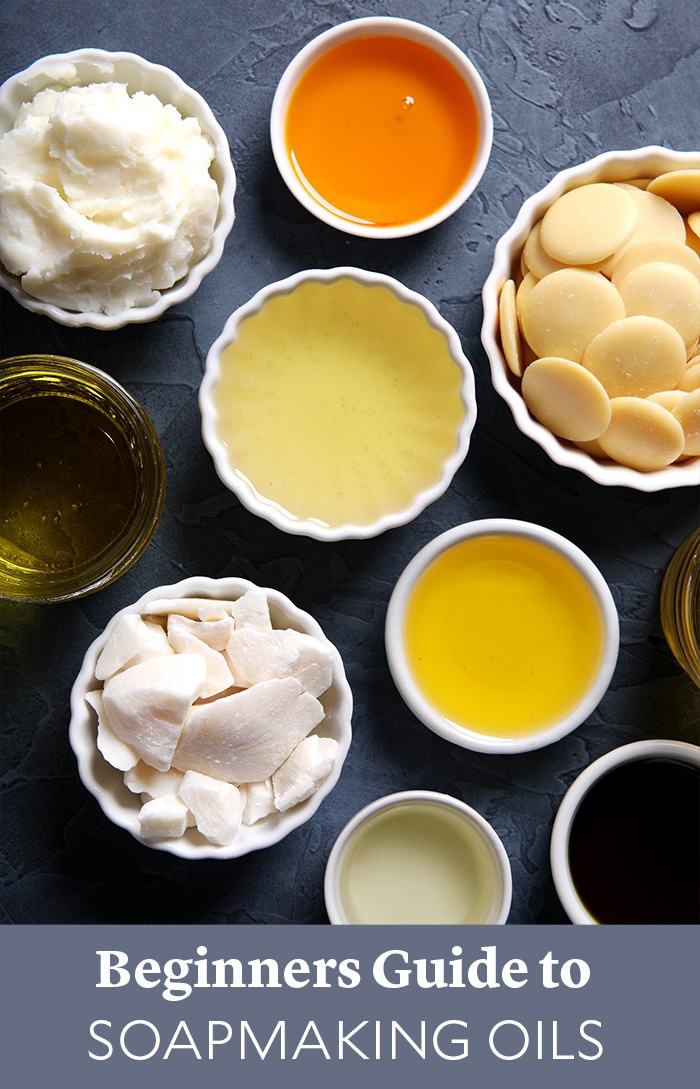
One of the best parts of soap making is being able to customize your recipe down to the very last ingredient. There are an infinite number of oil, fragrance, color, and technique combinations.
One of the most important aspects of any recipe is the oils and butters you choose. They affect moisturizing properties, how well the bars lather, and the designs you’re able to create. To help, we’ve assembled our most comprehensive resource on fixed oils to date. It includes information on usage rates and shelf lives. It also has an FAQ section and a quick guide at the bottom.
Find all our oils here and all our butters here.
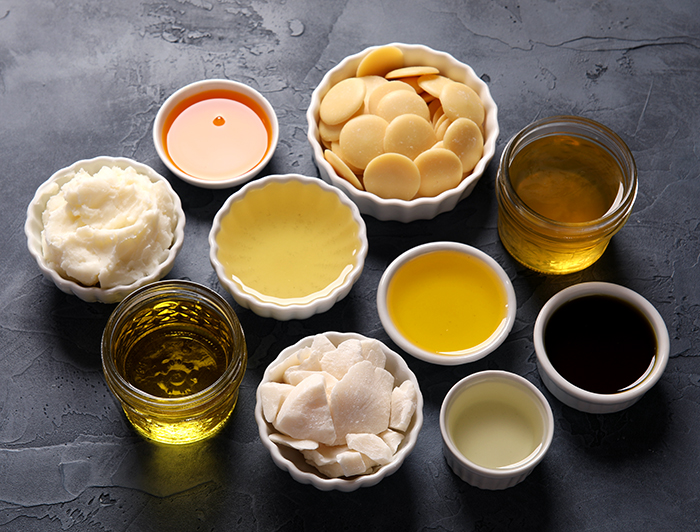
Soap making oils and butters
Apricot Kernel Oil – 1 year
Apricot kernel oil is lightweight and high in linoleic and oleic acids. It’s conditioning and easily absorbed into the skin. It produces small bubbles. We recommend using at 15% or less in your recipe. That way the bars aren’t too soft and they last longer in the shower.
Argan Oil – 2 years
You’ll love argan oil in DIY skin and hair care products. It feels silky and moisturizing, and it’s packed with vitamins E and A. It can be used in cold process up to 10%.
Avocado Oil – 1 year
Avocado oil makes a soft bar of soap and is generally used at 20% or less in cold process recipes. It’s rich in vitamins A, B, D, and E. The high levels of fatty acids make it great for lotion, body butter, and conditioner as well.
Avocado Butter – 3 years
Avocado butter is solid at room temperature. It’s derived from the fruit of the avocado tree and hydrogenated. It has a creamy consistency that makes skin feel smooth and moisturized. You can use this butter up to 12% in your cold process recipes. It also works well in lotion and body butter.
Babassu Oil – 2 years
Babassu, which comes from a native Brazilian palm tree, can be used in place of coconut or palm oil in cold process soap. It adds the same firming and cleansing properties, and it can be added up to 33%. However, babassu does have a lighter feeling on the skin and it absorbs quickly. We recommend giving all three oils a try in small test batches to see what you think.
Beeswax (White & Yellow) – 3 years
Yellow beeswax is refined and not bleached, while white beeswax is refined and bleached naturally by exposing it in thin layers to air, sunlight, and moisture. It can be used up to 8% in cold process recipes to harden the bars. Your lye and oils need to be at 150°F or higher so the beeswax stays melted. It will speed up trace.
Borage Oil – 3 years
This oil is one of the richest sources of essential fatty acids. One of those fatty acids is gamma-linolenic acid, which helps nourish and hydrate the skin. It works well especially for those with sensitive or mature skin. Try it in cold process up to 33%.
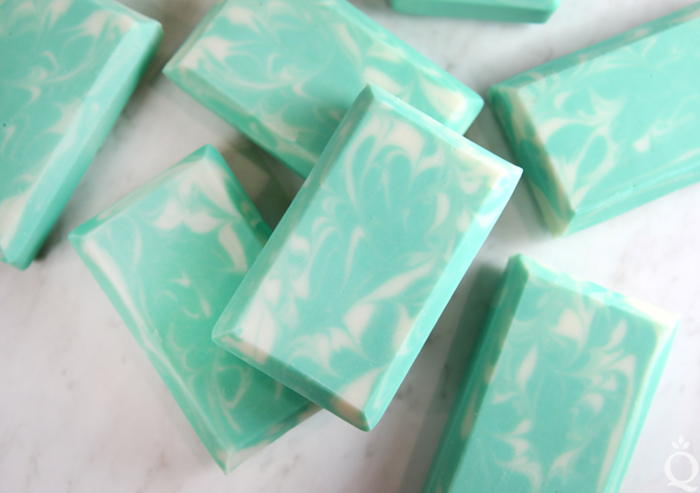
Canola Oil – 1 year
Canola oil is an affordable option for soap. It produces a balanced bar with creamy lather. It’s also a great substitute for olive oil. You can use canola at 15-40% in cold process.
Carrot Seed Oil – 2 years
This oil has a silky texture that’s hard to beat. It’s lightweight and absorbs quickly, and it’s especially suited for those with sensitive skin. It can be used in cold process soap at 5-15%.
Castor Oil – 2 years
This thick liquid is extracted from the castor bean plant. It draws moisture to the skin and creates amazing lather in soap. We recommend using it at 2-5%. You can use it up to 25%, although more than 10% can make the bars soft and sticky.
Chia Seed Oil – 1 year
Chia seed oil is the perfect addition to handmade soap, body butter, conditioner, and cuticle oil. You’ll love how lightweight and moisturizing it feels. The oil is also packed with fatty acids, protein, and vitamins. It can be used in cold process around 10%.
Cocoa Butter Pastilles, Organic Cocoa Butter Wafers, Deodorized Cocoa Butter – 2 years
This butter is solid and hard at room temperature. It adds a luxurious and moisturizing feeling to cold process soap. We recommend tempering it for the best results. Use cocoa butter at 15% or less in cold process soaps – any higher can cause cracking in your final bars.
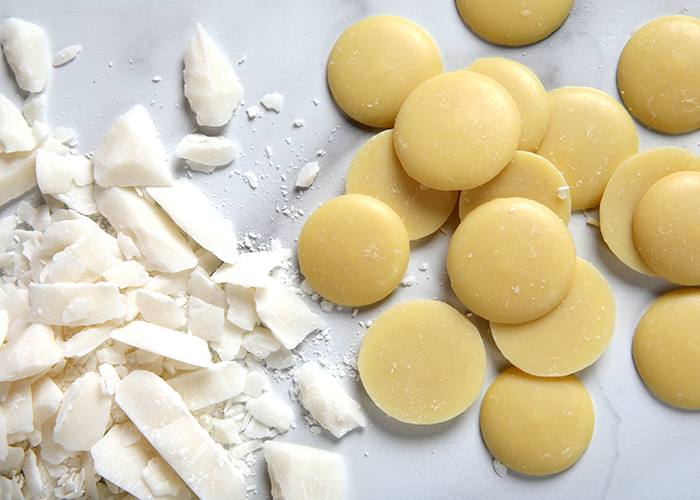
Coconut Oil – 18 months
This is one of the most common raw materials used in the soap and cosmetic industry. It comes in several versions, including 76 and 92°F melting point oils – ours is 76°F. Both have the same SAP value. Coconut oil is super cleansing and produces large bubbles in cold process. It’s so cleansing that it can be drying. It can be used up to 33%, but we recommend using it around 15% if you have sensitive or dry skin.
Coffee Butter – 2 years
This luscious and rich butter is perfect for lotion, body butter, and soap. It’s a blend of hydrogenated vegetable oil and coffee seed oil, and it contains around 1% natural caffeine. It has a natural coffee scent and a creamy feeling. The butter can be used up to 6% in cold process.
Coffee Seed Oil – 2 years
This thick and luxurious oil is extracted from freshly-roasted coffee beans. Try it in handmade soap, lotion, balm, and bath bombs. It can be used in cold process up to 10%.
Cucumber Seed Oil – 2 years
Those with dry or mature skin will love this oil. It has excellent moisturizing properties, and when it’s applied it feels lightweight and absorbs quickly. Try it in cold process up to 15%.
Emu Oil – 1 year
This is a medium-weight oil that helps keep the skin hydrated. Use it in cold process soap up to 13%.
Evening Primrose Oil – 1 year
This oil has a lightweight and moisturizing consistency that absorbs quickly into the skin. It can be used up to 15% in cold process.
Flaxseed Oil – 6 months
Flaxseed oil is lightweight and a rich source of fatty acids. We love it in balm, body butter, and lotion. You can also use it in cold process up to 5%.
Fractionated Coconut Oil – 3 years
Fractionated coconut oil contains only the medium triglycerides, which means it stays liquid. Compared to coconut oil, it has a more lightweight feeling and it makes softer bars. It doesn’t have the same cleansing or lathering properties. We love it in scrub, lotion, and body butter. You can use it up to 30% in cold process.
Grapeseed Oil – 1 year
This oil leaves your skin feeling silky smooth. It has a lightweight and thin texture, and it’s high in lineoleic acid and antioxidants. Try it in DIY lotion, massage oil, and body butter. It can be used up to 15% in cold process.
Green Tea Seed Oil – 2 years
Pick up green tea seed oil today and try it in DIY soap, lotion, and conditioner. You’ll love the lightweight and moisturizing consistency that absorbs quickly into the skin. It’s also rich in nutrients like vitamins A and B. Add it to cold process up to 6%.
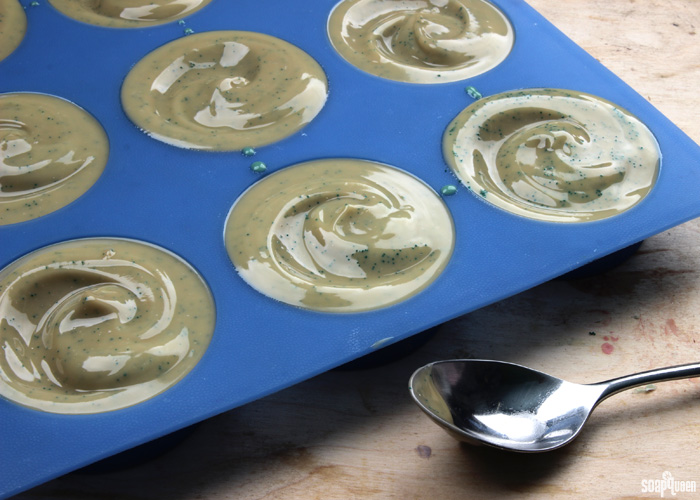
Hazelnut Fixed Oil – 3 months
This oil is low in fatty acids, so it slows down trace. That makes it great for intricate cold process designs. It has a lightweight texture and it creates conditioning and small lather. Hazelnut oil is used at 20% or less.
Hemp Seed Oil – 1 year
Hemp seed oil is an amazing source of fatty acids. They help keep the skin hydrated all day long. It also creates excellent lather. Use up to 15% in cold process.
Jojoba Oil – 2 years
This product is actually a liquid wax that will contribute to a very stable and long-lasting bar of soap. We recommend it at 10% or less in cold process. More than that can weigh down the lather.
Kokum Butter – 2 years
Pick up kokum butter today and add it to handmade soap and body butter. It has a lightweight and moisturizing consistency that absorbs quickly. We recommend tempering it using the same method as cocoa butter. It can be used in cold process at 10% or less.
Kukui Nut Oil – 2 years
This luxurious oil is a must-have for your collection. Kukui (koo-koo-ee) comes from Hawaii. It has a lightweight and silky consistency that absorbs quickly into the skin. Try it in cold process up to 20%.
Lingonberry Seed Oil – 2 years
You’ll love the way this oil feels on the skin – it has a silky and lightweight texture. It’s also packed with essential fatty acids and antioxidants. Try lingonberry seed oil in cold process at 5-15%.
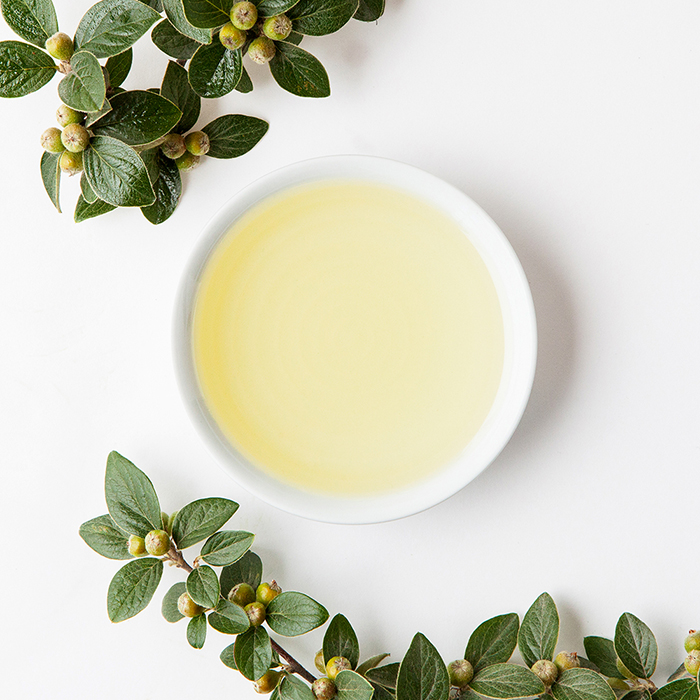
Mango Butter – 2 years
This butter is extracted from the fruit kernels of the mango tree. It’s solid at room temperature but melts on contact with the skin. We recommend tempering it for best results. It can be used up to 15% in cold process.
Meadowfoam Oil – 1 year
This oil has a moisturizing and conditioning feel that’s similar to jojoba oil. It contributes to a creamy and silky lather in soap. Originally developed as an alternative to sperm whale oil, this earth-friendly product is generally used at 20% or less in cold process. We like using it around 10%.
Moringa Seed Oil – 2 years
Pick up moringa seed oil today and add it to cold process up to 15%. You’ll love how moisturizing it feels on the skin. It has a lightweight and non-greasy consistency.
Neem Oil – 2 years
If you’ve ever worked with neem oil, there’s a good chance you remember the scent. Its distinct odor is often described as musky or garlicky. Don’t let that scare you away though – there’s a reason neem has been used on the skin for centuries. People love it because it’s incredibly moisturizing and full of antioxidants. It can be used at 3-6% in cold process.
Oat Oil – 1 year
This oil absorbs quickly and leaves your skin feeling hydrated all day long. It’s rich in fatty acids, antioxidants, and vitamin E. You’ll love oat oil’s lightweight and non-greasy texture in cold process soap. It can be used at 5-15%.
Olive Oil (Pomace & Pure) – 2 years
This is a staple in cold process recipes. It’s a thick oil that moisturizes the skin and creates creamy lather. Compared to pomace, pure olive oil creates softer bars and takes longer to trace. It can be used up to 100% in cold process.
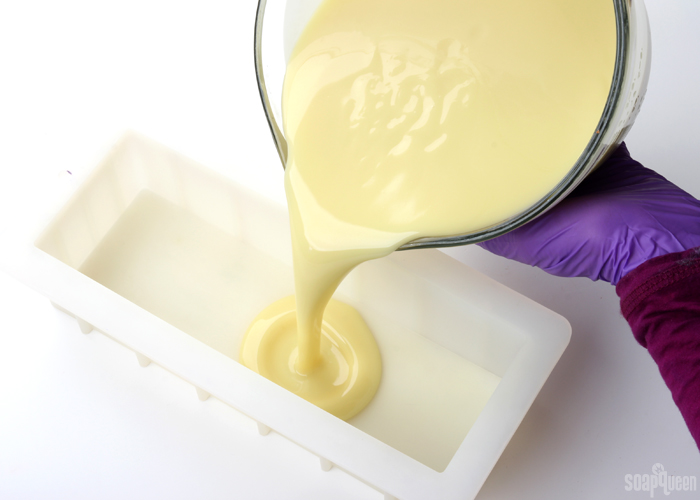
Palm Oil – 1 year
Palm oil adds a unique feeling to cold process soap. It helps harden the bars and it creates lather when paired with coconut oil. In cold process soap, the oil can be used up to 33%. Don’t forget to fully melt and mix the palm oil before use, that way the fatty acids will distribute evenly. Our supplier is a member of the Roundtable on Sustainable Palm Oil – learn more about the organization here.
Palm Kernel Flakes – 1 year
This is a mixture of partially-hydrogenated palm kernel oil and soy lecithin, and it comes in flake form. We only recommend it up to 15% in cold process soap – a higher percentage can make the bars too hard. It will speed up trace, so be prepared to work fast. These flakes are also from an RSPO supplier.
Peach Kernel Oil – 1 year
This skin-loving pale yellow oil adds moisturizing properties and creates a stable lather in cold process soap. We recommend it up to 25%. It’s a great substitute for sweet almond oil or grapeseed oil.
Peanut Oil – 1 year
This pale yellow oil is typically used as a substitute for olive oil or canola oil in cold process recipes. It can be used up to 25%.
Raspberry Seed Oil – 2 years
Keep your skin feeling smooth with this oil. It’s packed with essential fatty acids. When applied, it feels lightweight and absorbs quickly. Use it in cold process soap at 5-15%.
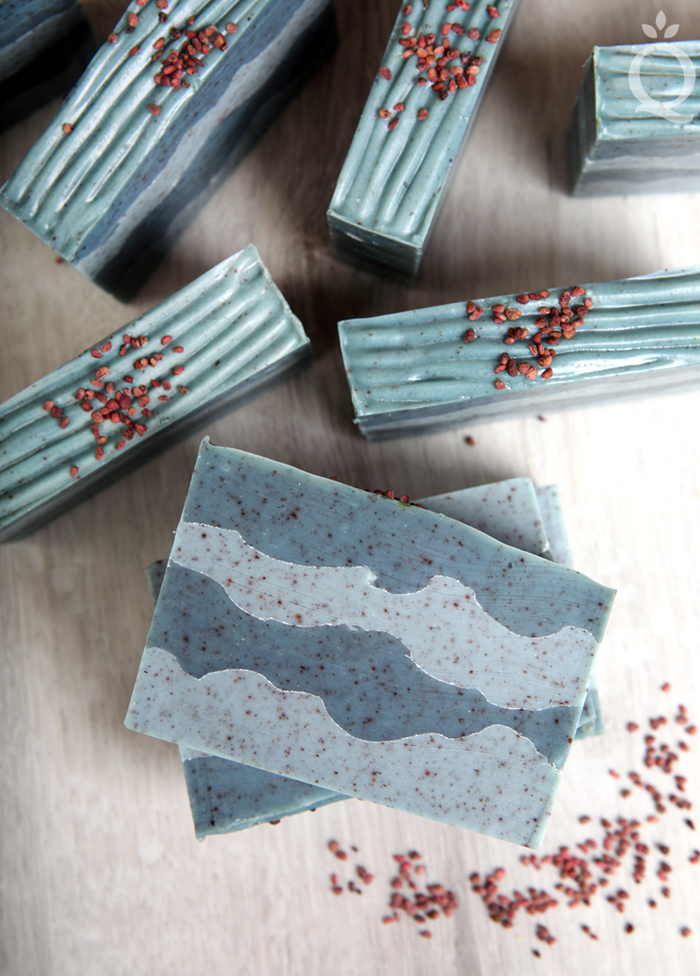
Red Palm Oil – 2 years
Add this oil to your cold process soap to create firm bars. It also adds a beautiful orange color. The oil can be used up to 33%, but we recommend it around 15% because it can stain molds and the skin.
Rice Bran Oil – 2 years
You’ll love the way this oil feels in handmade soap. It’s rich in vitamin E and antioxidants, and it has a thick and moisturizing consistency that’s similar to olive oil. It can be used up to 100% in cold process soap, but the bar will be soft and have small lather. We recommend using rice bran oil around 20%.
Rosehip Seed Oil – 2 years
Those with dry or mature skin will love rosehip seed oil. It’s rich in vitamins A and C, and it feels hydrating on the skin. It has a lightweight and non-greasy consistency. Try it in cold process around 10%.
Safflower Oil – 1 year
This mild and skin-loving oil is similar to canola oil or sunflower oil. It can be used up to 20% in cold process soap.
Sesame Oil – 1 year
This light golden oil is high in antioxidants and fatty acids, which add moisturizing properties to soap. It’s not the same as toasted sesame oil that’s typically used in Asian cuisine. It can be used up to 10% in cold process recipes.
Shea Butter – 2 years
Shea butter feels luxurious and moisturizing on the skin. It helps harden cold process soap and it can be used up to 15%. We recommend tempering it for the best results.
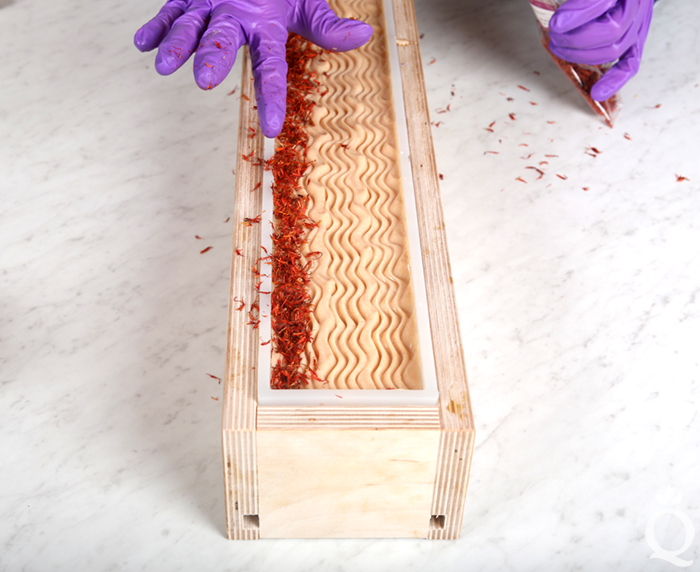
Soybean Oil – 3 months if refrigerated
Soybean oil has a creamy, stable, and conditioning lather. It produces a hard bar of soap when paired with palm oil or coconut oil. It’s typically used at 50% or less in cold process recipes. We recommend a usage rate of up to 15%.
Sunflower Oil – 6 months
Sunflower oil is rich in essential fatty acids and vitamin E, making it it one of the more cost-effective oils. It produces a lather that is incredibly conditioning on the skin. It does have a slower absorption rate, so it can feel slightly oily on the skin in leave-on recipes like balms and lotions. To help increase the shelf life of this oil, be sure to keep it refrigerated. It can be used in cold process recipes up to 100%, but we recommend 20% or less.
Sweet Almond Oil – 1 year
You need sweet almond oil in your collection. It’s full of fatty acids and it has a lightweight and moisturizing consistency. You’ll love the way it feels in DIY soap, lotion, and scrub. It can be used up to 20% in cold process.
Tamanu Oil – 2 years
Tamanu oil has a lightweight and moisturizing consistency that absorbs quickly into the skin. It’s also packed with essential fatty acids. It can be used up to 5% in cold process.
Walnut Oil – 3 months
This antioxidant-rich oil conditions and moisturizes the skin. It can be used up to 15% in cold process soap.
Wheat Germ Oil – 1 year
When it comes to skincare, wheat germ oil has a lot to offer. It’s jam-packed with nutrients like vitamins A, B, D, and E. Even though the oil is fairly heavy, it has a light and almost powdery feeling on the skin. It can be used in cold process up to 10%.
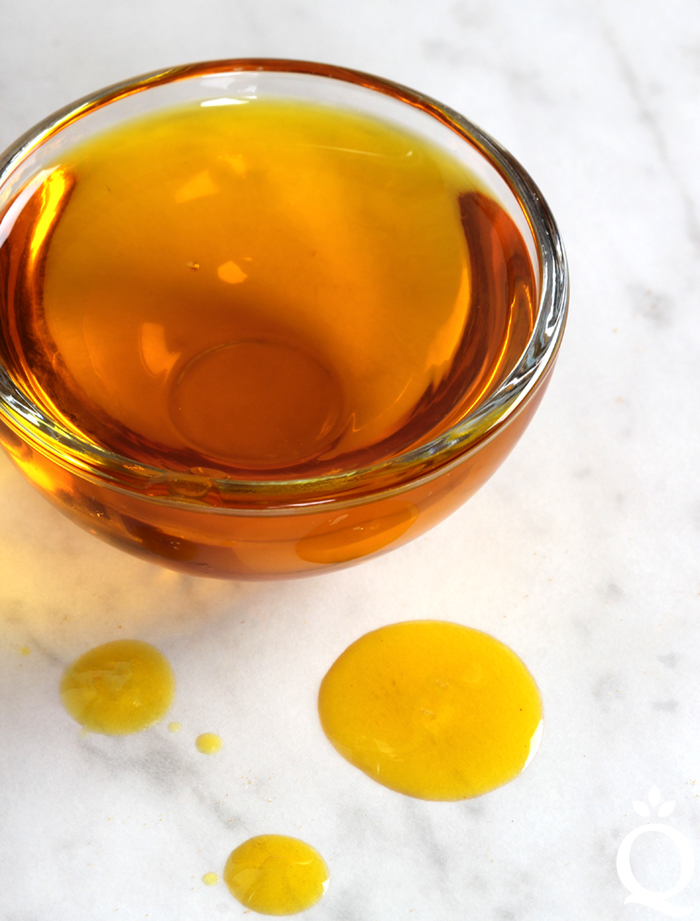
Frequently asked questions
Q: Do I need to heat up my entire container of palm oil before I use it in my cold process recipe?
A: Yes, otherwise the fatty acids won’t distribute properly. That creates white bits or inconsistent results in soap. Fully melt and mix well before each use.
Q: Do I need to heat up my entire container of coconut oil before I use it in my cold process recipe?
A: No, you can scoop it right into a container at room temperature.
Q: I’m out of palm oil – can I use palm kernel flakes instead?
A: No, palm oil and palm kernel flakes have different SAP values and they feel different in soap. Palm oil hardens soap and creates lather with coconut oil. It can be used up to 33%. Palm kernel oil creates a hard bar and is recommend up to 15%.
Q: How can I tell if my oil or butter is rancid?
A: There is a noticeable change in either the color, consistency, or odor of the oils and your butters may start to develop mold or dark spots. We recommend writing down the date you receive the oil, that way you know when it’s expired.
Q: What happens if I used rancid oil or butter in soap?
A: It can develop dreaded orange spots. They cause discoloration and the bars may develop an unpleasant scent.
Q: What happens if I used a large amount of olive oil in my recipe?
A: A 100% olive oil soap, also known as Castile soap, creates gentle and luxurious bars, but it requires some patience. It will take longer to harden than other recipes – up to 6 months. Some makers developed a taste for “Bastile bars,” which are made with a high percentage of olive oil and harder oils to help speed up the hardening process. You can also add sodium lactate or use a water discount.
Q: Help! I’m out of sweet almond oil, can I just put in avocado oil?
A: Yes, but you’ll need to run your recipe through the Lye Calculator again.
Q: What is a SAP Value?
A: A saponfication (SAP) value is the amount of lye needed to completely saponify 1 gram of an oil or butter (see the Beginner's Guide to Soap Making: Cold Process for an explanation of saponification). For example, the SAP value of canola oil is .132, which means it takes .132 grams of lye to turn 1 gram of canola oil into soap. The Lye Calculator automatically calculates the SAP value for you.
Quick guide
| Oil | Shelf Life | SAP Value | Usage Rate in Cold Process |
| Apricot Kernel Oil | 1 year | .135 | up to 15% |
| Argan Oil | 2 years | .136 | up to 10% |
| Avocado Oil | 1 year | .133 | up to 20% |
| Avocado Butter | 3 years | .133 | up to 12% |
| Babassu Oil | 2 years | .175 | up to 33% |
| Beeswax (White & Yellow) | 3 years | .069 | up to 8% |
| Borage Oil | 3 years | .135 | up to 33% |
| Canola Oil | 1 year | .132 | up to 40% |
| Carrot Seed Oil | 2 years | .137 | up to 15% |
| Castor Oil | 2 years | .135 | up to 25%, recommend 2-5% |
| Chia Seed Oil | 1 year | .158 | up to 10% |
| Cocoa Butter | 2 years | .137 | up to 15% |
| Coconut Oil | 18 months | .178 | up to 33% |
| Coffee Butter | 2 years | .133 | up to 6% |
| Coffee Seed Oil | 2 years | .139 | up to 10% |
| Emu Oil | 1 year | .192 | up to 13% |
| Evening Primrose Oil | 1 year | .133 | up to 15% |
| Flaxseed Oil | 6 months | .19 | up to 5% |
| Fractionated Coconut Oil | 3 years | .232 | up to 30% |
| Grapeseed Oil | 1 year | .133 | up to 15% |
| Green Tea Seed Oil | 2 years | .136 | up to 6% |
| Hazelnut Fixed Oil | 3 months | .136 | up to 20% |
| Hemp Seed Oil | 1 year | .135 | up to 15% |
| Jojoba Oil | 2 years | .069 | up to 10% |
| Kokum Butter | 2 years | .135 | up to 10% |
| Kukui Nut Oil | 2 years | .135 | up to 20% |
| Lingonberry Seed Oil | 2 years | .135 | up to 15% |
| Mango Butter | 2 years | .137 | up to 15% |
| Meadowfoam Oil | 1 year | .12 | up to 20% |
| Moringa Seed Oil | 2 years | .139 | up to 15% |
| Neem Oil | 2 years | .136 | up to 6% |
| Oat Oil | 1 year | .138 | up to 15% |
| Olive Oil | 2 years | .134 | up to 100% |
| Palm Oil | 1 year | .144 | up to 33% |
| Palm Kernel Flakes | 1 year | .178 | up to 15% |
| Peach Kernel Oil | 1 year | .178 | up to 25% |
| Peanut Oil | 1 year | .19 | up to 25% |
| Raspberry Seed Oil | 2 years | .135 | up to 15% |
| Red Palm Oil | 2 years | .144 | up to 33%, recommend around 15% |
| Rice Bran Oil | 2 years | .129 | up to 100%, recommend around 20% |
| Rosehip Seed Oil | 2 years | .135 | up to 10% |
| Safflower Oil | 1 year | .19 | up to 20% |
| Sesame Oil | 1 year | .19 | up to 10% |
| Shea Butter | 2 years | .133 | up to 15% |
| Soybean Oil | 3 months | .135 | up to 50%, recommend around 15% |
| Sunflower Oil | 6 months | .134 | up to 100%, recommend around 20% |
| Sweet Almond Oil | 1 year | .136 | up to 20% |
| Tamanu Oil | 2 years | .148 | up to 5% |
| Walnut Oil | 3 months | .192 | up to 15% |
| Wheat Germ Oil | 1 year | .131 | up to 10% |
